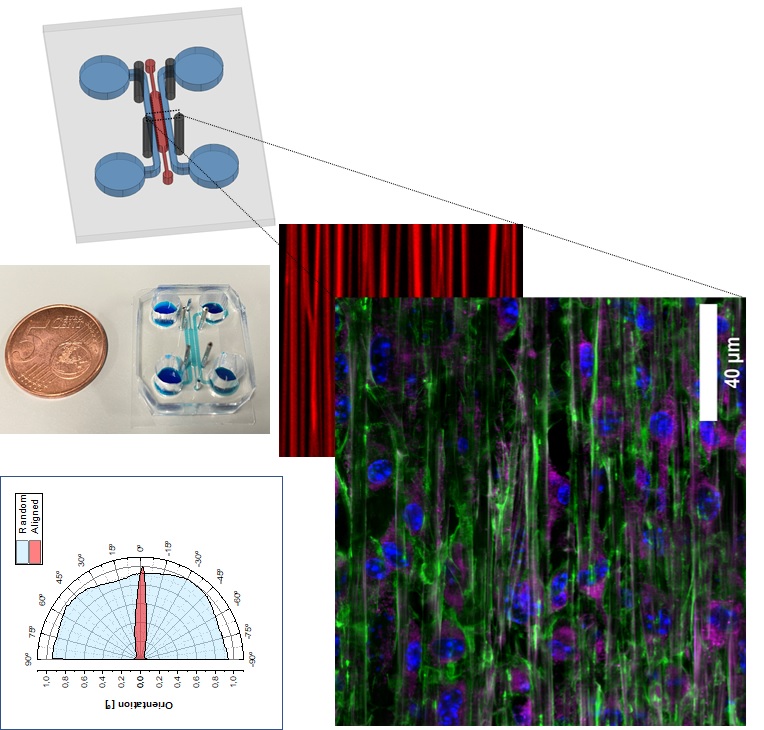The Nanobioengineering and Biomaterials Unit proposed a microfluidic device that allows to reproduce some of the main characteristics of cardiac tissues to deal with the difficulty of mimicking the high level of organization and development of adult cardiac tissues. One of the most relevant is its high level of anisotropy, which means that the tissue is highly aligned in one particular direction. This was achieved by patterning the substrate of the device with aligned nanofibers, which were deposited by electrospinning. The researchers also proposed a user-friendly strategy to incorporate rod-shaped electrodes to stimulate the cells. Electrical cues are essential for the maturation of cardiac cells as they drive the development and organization of many cardiac proteins. This microfluidic platform has been conceived to obtain a highly biomimetic cardiac model in 2D, towards further incorporation of oxygen gradients a well as the generation of 3D cardiac tissue to achieve a higher degree of physiological mimicry. The final goal is to reproduce a myocardial infarction event, which would greatly benefit the field of cardiovascular research, as there is a clear lack of adequate models to study this disease.
A microphysiological system combining electrospun fibers and electrical stimulation for the maturation of highly anisotropic cardiac tissue. López-Canosa A., Perez-Amodio S., Yanac-Huertas E., Ordoño J., Rodriguez-Trujillo R., Samitier J., Castaño O., Engel E. Biofabrication. 2021 Jun 1;13(3). DOI: 10.1088/1758-5090/abff12

